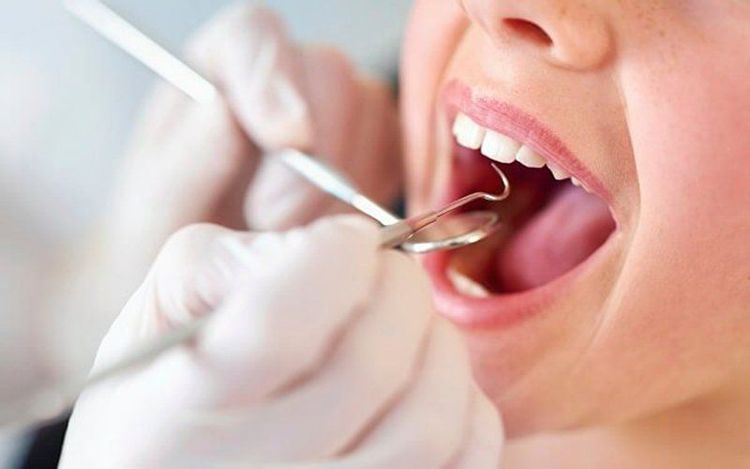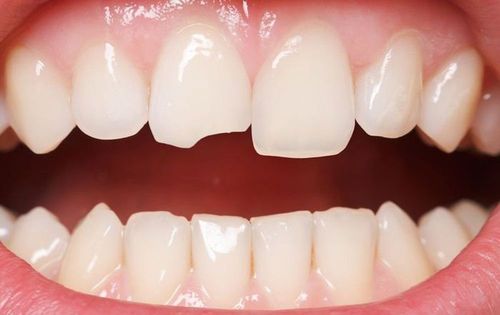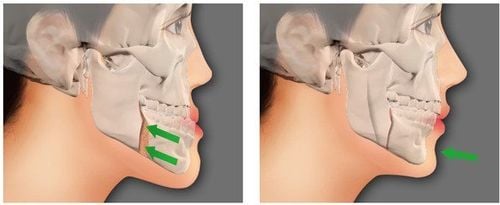This is an automatically translated article.
The article was consulted with Specialist Doctor I Nguyen Trung Hau - Doctor of Odonto-Stomatology - Department of Medical Examination & Internal Medicine - Vinmec Da Nang International General Hospital.If you have only chipped a small piece of enamel, your dentist can repair the damage with a filling. If the repair is for front teeth or is visible when you smile, your dentist will likely use a process called bonding, which uses a tooth-colored composite resin. This article helps provide some information about fillings when chipped teeth.
1. How to take care of chipped or broken teeth
If your tooth is broken, chipped or broken, see your dentist as soon as possible. Otherwise, your teeth may suffer further damage or become infected, possibly causing you to lose teeth.
In the meantime, try these self-care measures:
If your tooth hurts, take acetaminophen or another over-the-counter pain reliever. Gargle with salt water. If the fracture causes a sharp or jagged edge, cover it with a piece of waxed paraffin or sugar-free gum to prevent it from cutting into your tongue or the inside of your lips or cheeks. If you must eat, eat soft foods and avoid biting the broken tooth. The treatment for a broken or chipped tooth will depend on the extent of its damage. If just a small piece of enamel is broken, the repair can often be done simply in a single visit to the office. A severely damaged or broken tooth may require a longer and more expensive procedure. Here are some ways your dentist can repair your broken or chipped tooth.
2. Dental fillings
If you have only chipped a small piece of enamel, your dentist can repair the damage with a filling. If the repair is for front teeth or is visible when you smile, your dentist will likely use a process called bonding, which uses a tooth-colored composite resin.
Bonding is a simple procedure that usually does not require dental anesthesia. To bond a tooth, the dentist first etches its surface with a liquid or gel to create a roughness and cause the bonding material to adhere to it. Next, the dentist applies an adhesive material to the tooth, followed by tooth-colored resin. After shaping the bonding material to look like natural teeth, the dentist uses a UV light to harden the material.

Trám răng là phương pháp hiệu quả để khắc phục tình trạng răng bị mẻ một mảnh men nhỏ
3. Create tooth caps
If a large part of the tooth is broken or the tooth is heavily decayed, the dentist may grind or file away a portion of the remaining tooth and cover it with a crown, or tooth-shaped cap, made to protect and improve good teeth. appear. Permanent crowns can be made from metal, porcelain combined with metal, rosin or all ceramic. Different types have different benefits. The all-metal crown is the strongest. Porcelain and resin crowns can be made to closely resemble the original tooth.
If the entire upper part of the tooth is broken but the root is still intact, the dentist or endodontist (a root canal dentist) can perform a root canal treatment and place a post or abutment in the canal. marrow, then build enough structure to make a crown. The dentist can then attach the crown to the post or restorative after it has been retained.
Getting a crown usually takes two visits to the dentist's office. During the first visit, the dentist may take X-rays to examine the root and surrounding bone. If no further problems are found, the dentist will numb the tooth and surrounding gum, then remove enough of the remaining tooth to make room for the crown. If a break or debris takes away a large chunk of the tooth, the dentist may use a filling material to erect the tooth to hold the crown. Next, your dentist will use a putty-like material to create an impression of the tooth receiving the crown as well as the opposing tooth (the tooth that will touch when you bite down). The impressions are sent to a lab where the crown is made. In the meantime, your dentist may place a temporary crown made of thin acrylic or metal.
During your second visit, usually two to three weeks later, your dentist will remove the temporary crown and check the fit of the permanent crown before placing the permanent cement in place.
Some dental offices have special digital milling technology that allows them to fabricate crowns the same day without taking an impression. They may also have a scanner in their mouth to create a digital impression that is sent to the lab as an electronic file.
Dental - Jaw - Facial - Vinmec International General Hospital specializes in examining and treating all common dental problems in adults and children. The hospital has a team of qualified doctors and dentists and a system of advanced machinery to help support the examination process well and shorten the time.
Therefore, when there is any problem, you can go to the hospital to be checked for appropriate instructions from a specialist doctor. Avoiding leaving for a long time will affect the structure and aesthetics of the teeth.
Please dial HOTLINE for more information or register for an appointment HERE. Download MyVinmec app to make appointments faster and to manage your bookings easily.
Reference source: drcareimplant.com












